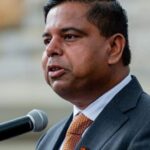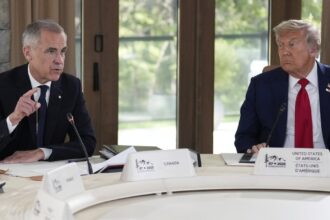In a significant reshuffling that underscores the government’s strategic priorities heading into a challenging political season, Prime Minister Justin Trudeau’s administration has confirmed five additional cabinet chiefs of staff appointments this week, completing the senior leadership team that will guide ministerial offices through crucial policy implementations in the coming year.
The appointments, announced through internal memoranda obtained by CO24, reveal a calculated blend of experienced political operatives and policy specialists who will serve as the operational backbone for key ministries facing mounting public scrutiny and complex policy challenges.
“These appointments reflect our government’s commitment to strengthening institutional knowledge while bringing fresh perspectives to address Canada’s evolving national priorities,” said a senior PMO source speaking on background. “Each chief brings specialized expertise that aligns with our mandate to deliver results for Canadians during these economically uncertain times.”
Among the notable appointments is Catherine McKenna’s former senior advisor, Marlo Raynolds, who returns to government after a three-year stint in the private sector to lead the Infrastructure and Communities portfolio. His appointment signals a renewed focus on climate-resilient infrastructure projects that have faced criticism for implementation delays and budget overruns.
Similarly, the selection of Rebecca Caldwell, previously a senior economic policy researcher at the C.D. Howe Institute, to head the Finance Minister’s office indicates the administration’s intention to prioritize fiscal credibility amid growing concerns about Canada’s economic outlook. Caldwell’s expertise in monetary policy and international finance comes at a critical juncture when economic indicators have shown persistent inflation challenges despite Bank of Canada interventions.
“The chief of staff role has evolved significantly in recent years,” explains Dr. Emmett Ferguson, professor of political management at Carleton University. “These aren’t merely administrative positions anymore—they function as strategic policy architects and gatekeepers who shape ministerial agendas while managing complex stakeholder relationships. Their selection tells us much about where this government plans to focus its energy.”
The appointments also reflect diversity considerations, with three of the five new chiefs being women and two representing visible minorities—a continuation of the government’s publicly stated commitment to representation within senior leadership circles. This pattern aligns with broader political strategies observed across federal institutions since the last cabinet shuffle.
Opposition critics have questioned the timing of these appointments, suggesting they represent pre-electoral positioning rather than governance imperatives. Conservative Shadow Minister for Democratic Institutions, Melissa Lancaster, characterized the moves as “rearranging deck chairs while Canadians struggle with affordability issues and international trade uncertainties.”
The remaining appointments include veteran parliamentary affairs strategist Martin Dupuis taking the helm at Natural Resources, former provincial deputy minister Sarah Chang moving to Immigration, Refugees and Citizenship, and longtime PMO advisor Jonathan Stein shifting to lead the Employment and Social Development team.
Each chief faces distinct challenges: Dupuis must navigate contentious pipeline and resource development issues that have divided provincial and federal authorities; Chang inherits an immigration system struggling with processing backlogs and refugee integration; and Stein must address workforce development pressures amid technological disruption and changing global economic patterns.
These appointments complete the leadership structure first initiated in March when the Prime Minister’s Office announced seven chief of staff changes following the departure of several senior advisors to private sector positions. The full complement now represents one of the most significant leadership overhauls since the Trudeau government took office.
As these chiefs assume their roles in the coming weeks, observers of Canadian political dynamics will watch closely for policy shifts and operational changes that might signal the government’s strategic priorities heading into what many anticipate will be a contentious pre-election period. The question remains: will this refreshed leadership team deliver the policy victories and public confidence the government needs, or will persistent economic headwinds and international challenges overwhelm even the most capable administrative apparatus?

























